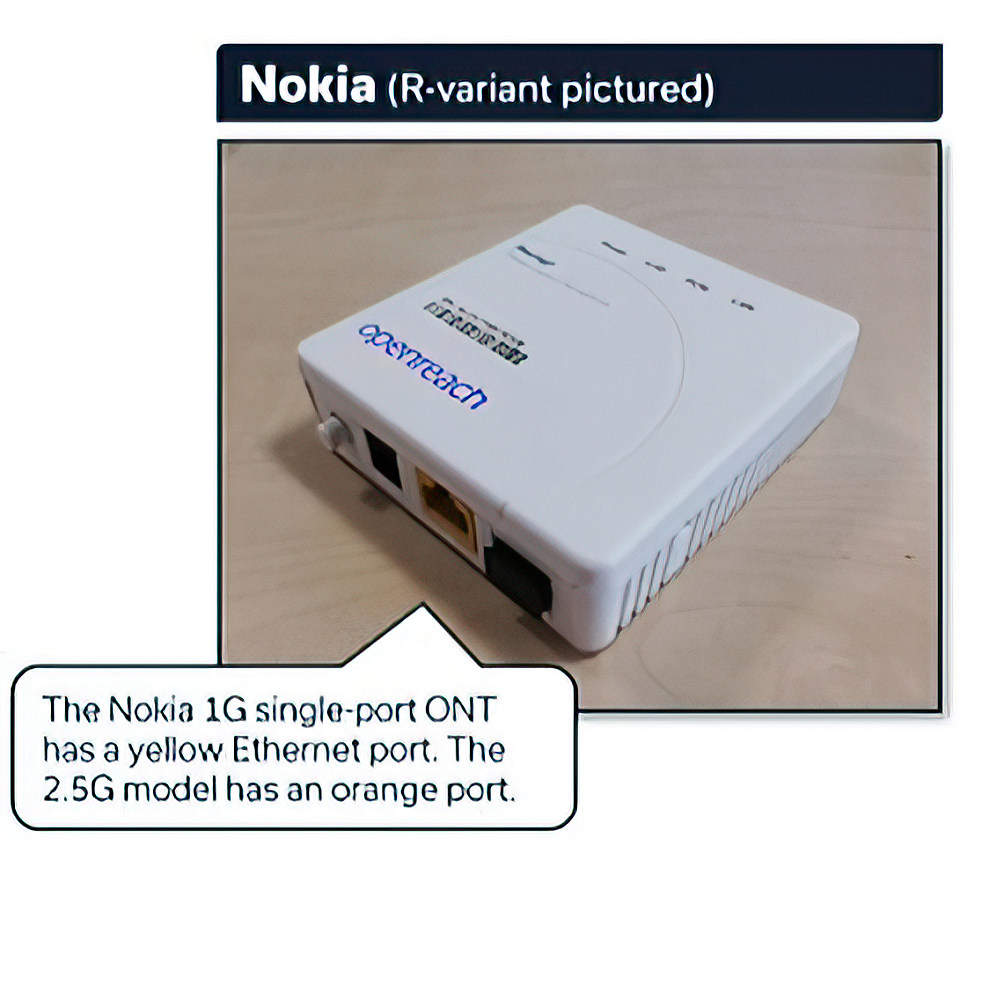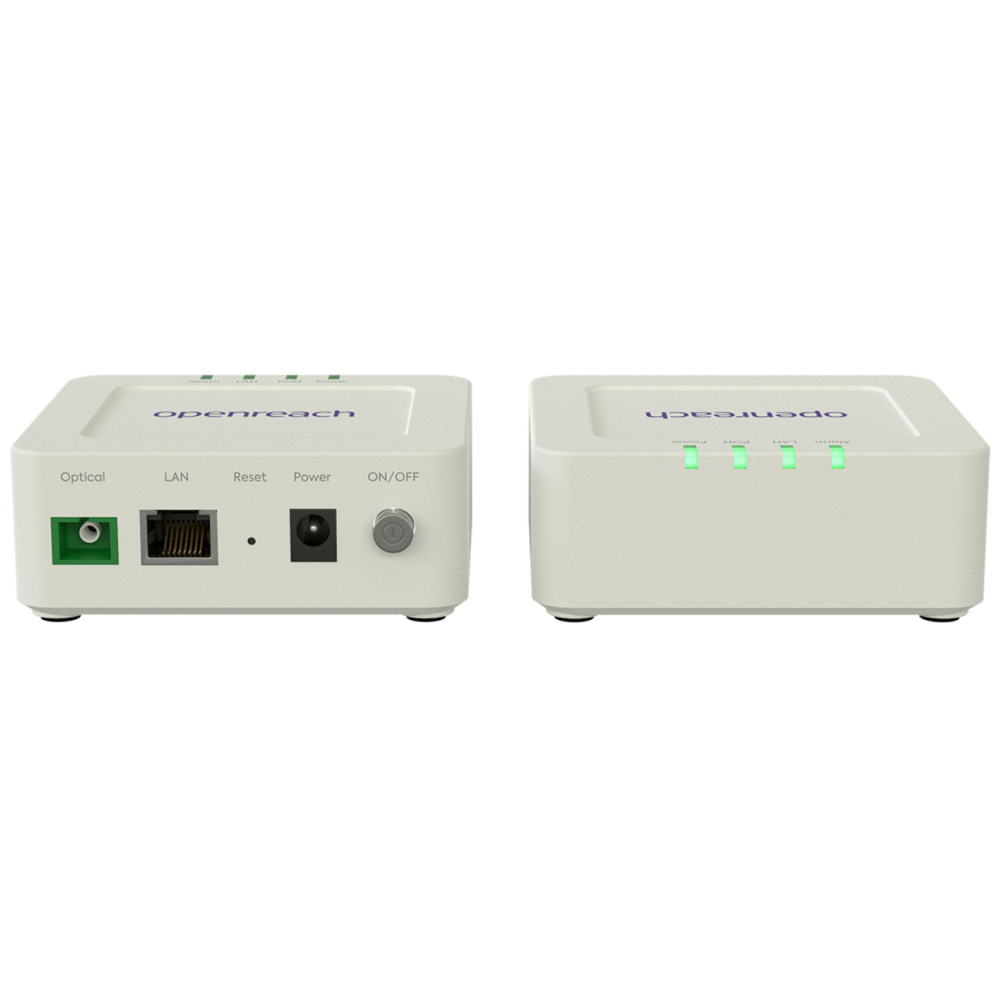Pictured – Openreach’s Future 2.5Gbps ONT for FTTP Broadband UPDATE
Saturday, Sep 17th, 2022 (12:01 am) – Score 17,808

During the week we revealed that Openreach were preparing to pilot a faster 1.2Gbps and 1.8Gbps tier on their UK FTTP broadband ISP lines (here). As part of that, they also intend to test two new Optical Network Terminals (ONT / ONU) for installation inside homes, and we’ve now got some details on those too.
ONTs (aka – Optical Network Unit) are usually installed inside your home (wall hung), near to where the fibre optic cable physically enters the property. The primary job of such kit is simply to take that optical signal and convert it into an electrical one, so you can connect it to a broadband router via a standard Local Area Network (Ethernet) port.
NOTE: The operator’s £15bn Fibre-to-the-Premises (
The operator’s £15bn Fibre-to-the-Premises ( FTTP ) network currently covers 8 million premises, but they aim to reach 25m by December 2026 (c.80%+ of the UK).
The ONT then connects back, via optical fibre and some other bits (splitters etc.), to an Optical Line Terminal (OLT) deeper in the network (often at an exchange / headend), which itself then connects into the operator’s core network and helps to manage the end-user connections as part of the wider Passive Optical Network (PON).
At present Openreach tends to ship both a 4-port and 1-port ONT to end-users, but most homes will only need the single port model – unless you expect to take more than one FTTP connection / fibre at the same time. Historically these ONTs have been supplied by ECI, Huawei, Nokia and, more recently, ADTRAN.
However, the current hardware only supports 1Gbps Ethernet speeds, while the new ONTs being used on Openreach’s 1.2Gbps and 1.8Gbps product pilots will have a max rate (interface) of 2.5Gbps for obvious reasons – this is just the next most suitable standard after 1G. The ONTs being used are the Nokia G-010G-T and an ADTRAN SDX 611Q.
![]()
Otherwise, there’s not much more to add, since ONTs typically serve quite a simple purpose and there’s not a lot of noteworthy variation between them.
UPDATE 4th Oct 2022
ADTRAN has kindly provided a better image of their SDX 611q ONT and a more detailed spec sheet.
ADTRAN 611q ONT Product Specifications
Ethernet Interfaces
● RJ-45 for 2.5GE (100M/1G/2.5G)
● Ethernet Port Auto Negotiation orManual Configuration
● MDI/MDIX Automatically Sense
● Hardware Priority Queues on the Downstream Direction in Support of CoSEthernet Services Support
● 802.1D Bridging
● 802.1x Authentication
● Eight Queues, Strict Priority and/or WeightedFair Queue Schedulers
● Configurable to EtherType and TPID for Service Flexibility
● VLAN IDs 0 – 4095; EVC Configurable in the Range of 2 – 4,094
● Virtual Switch Based on 802.1q VLAN
● VLAN Tagging/Detagging
● VLAN Stacking (Q-in-Q) and VLAN Translation
● Class of Service Based on VLAN-ID, 802.1p Bit
● Marking/Remarking of 802.1pMosaic Application Support
● Mosaic Activate
● Mosaic Subscriber InsightWorking Environment
● Temperature: 32° F to 104° F (0° C to +40° C)
● Relative Humidity: 5% to 95%, Non-condensing Network Interface
● GPON optical interface BOSA on Board (BoB)
● Compliant with ITU-T G.984.2 GPON standards
● Class B+ optics support OAM
● OMCI (Embedded Operations Channel Interface) per ITU-T G.988 and Open OMCI standards
● 15 min rolling counters
● Dying gasp alarm
















![Toni Kroos là ai? [ sự thật về tiểu sử đầy đủ Toni Kroos ]](https://evbn.org/wp-content/uploads/New-Project-6635-1671934592.jpg)


